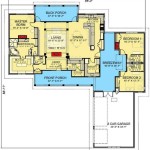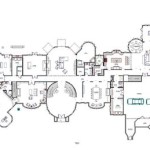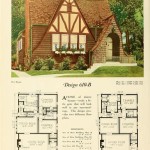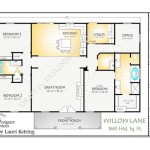Do It Yourself Tiny House Plans are blueprints or detailed instructions that guide individuals or families in the design and construction of their own small-scale dwellings. These plans typically include specifications for the building’s size, layout, materials, and construction methods, empowering homeowners to customize their living spaces according to their unique needs and preferences.
In an era characterized by urbanization and soaring housing costs, DIY tiny house plans have gained popularity as an alternative and sustainable solution for affordable homeownership. With careful planning and execution, DIYers can embark on the rewarding journey of building their own tiny homes, fostering independence, self-sufficiency, and a sense of accomplishment.
This article aims to provide aspiring homeowners with a comprehensive exploration of DIY tiny house plans, encompassing essential considerations, step-by-step guidance, and valuable resources to inform their decision-making process. By delving into the intricacies of designing and constructing a DIY tiny house, we empower homeowners to create a comfortable, cost-effective, and environmentally responsible living space that aligns with their aspirations.
When embarking on a DIY tiny house project, it’s essential to consider these eight key points:
- Planning and Design: Develop a clear vision and detailed plans.
- Zoning and Permits: Ensure compliance with local building codes and zoning regulations.
- Materials Selection: Choose durable, cost-effective materials suited to your design.
- Foundation and Structure: Opt for a sturdy foundation and robust structural framework.
- Utilities and Systems: Plan for efficient and reliable water, energy, and waste management systems.
- Interior Design: Maximize space and functionality with thoughtful interior layout and storage solutions.
- Budgeting and Financing: Determine project costs and secure necessary funding.
- Timeline and Labor: Set realistic construction timelines and anticipate labor requirements.
By carefully addressing these points, you can increase the likelihood of a successful and rewarding DIY tiny house building experience.
Planning and Design: Develop a clear vision and detailed plans.
The foundation of a successful DIY tiny house project lies in meticulous planning and design. Before commencing construction, it’s imperative to develop a clear vision and translate it into detailed plans that will guide the entire building process. Here are four crucial aspects to consider:
- Define Your Needs and Goals: Start by introspecting your lifestyle, values, and aspirations. Determine the purpose of your tiny house, whether it’s for full-time living, a vacation retreat, or a mobile workspace. Consider factors such as the number of occupants, desired amenities, and storage requirements. Clearly articulating your needs and goals will serve as the compass for your design decisions.
- Research and Inspiration: Immerse yourself in the world of tiny house living. Explore online forums, attend workshops, and visit existing tiny homes to gather inspiration and practical knowledge. Study different floor plans, layouts, and construction techniques to identify design elements that resonate with your preferences and lifestyle.
- Create a Floor Plan: Translate your vision into a tangible layout. Sketch out a detailed floor plan that includes the arrangement of rooms, windows, doors, and built-in features. Consider the flow of movement, natural light, and efficient use of space. Remember that every square foot in a tiny house is precious, so plan wisely to maximize functionality.
- Develop Construction Documents: Once the floor plan is finalized, create a comprehensive set of construction documents. These documents should include detailed drawings, specifications, and instructions that outline the construction process step by step. This will serve as a roadmap for your building journey and ensure that all aspects of the project are well-thought-out and documented.
By investing time and effort in planning and design, you lay the groundwork for a successful and enjoyable DIY tiny house building experience. Remember, the more detailed your plans are, the smoother the construction process will be.
Zoning and Permits: Ensure compliance with local building codes and zoning regulations.
Before embarking on your DIY tiny house project, it’s crucial to navigate the realm of zoning and permits. These regulations ensure the safety, structural integrity, and overall well-being of your community. Here’s a detailed breakdown of what you need to know:
- Zoning Laws: Zoning laws dictate how land can be used within a specific area. These laws are established by local governments to regulate the types of structures that can be built in different zones, such as residential, commercial, or agricultural. It’s essential to determine the zoning classification of your property to ensure that your tiny house complies with the designated use.
- Building Codes: Building codes are technical regulations that govern the construction of buildings to ensure their safety and habitability. These codes address various aspects, including structural requirements, fire safety, plumbing, electrical systems, and energy efficiency. Adhering to building codes is paramount to obtaining a building permit and ensuring the structural integrity of your tiny house.
- Building Permits: A building permit is an official document issued by the local building department that authorizes the construction or modification of a structure. Obtaining a building permit is typically a legal requirement and demonstrates that your plans comply with zoning laws and building codes. The permit process usually involves submitting detailed construction documents and paying applicable fees.
- Inspections: Building inspectors are responsible for ensuring that construction projects adhere to approved plans and meet safety standards. During the construction process, your tiny house will undergo several inspections, including foundation, framing, electrical, plumbing, and final inspections. These inspections are crucial to identify any potential issues and ensure that your tiny house is built to code.
Understanding and complying with zoning and permit requirements is essential for a successful and legal DIY tiny house project. By working closely with local authorities and adhering to regulations, you can avoid potential setbacks, ensure the safety of your dwelling, and contribute to the overall integrity of your community.
Materials Selection: Choose durable, cost-effective materials suited to your design.
The choice of materials for your DIY tiny house is crucial, as it will impact the durability, cost, and overall aesthetic of your dwelling. Here are four key considerations to keep in mind when selecting materials:
- Structural Materials: The structural components of your tiny house, such as the frame, walls, and roof, need to be strong and durable to withstand various environmental conditions. Common structural materials include wood, steel, and concrete. Wood is a popular choice for tiny houses due to its affordability, ease of workability, and natural insulation properties.
- Exterior Cladding: The exterior cladding protects your tiny house from the elements and gives it its unique character. Popular cladding materials include wood siding, metal panels, and fiber cement boards. Consider factors such as durability, weather resistance, and maintenance requirements when making your choice.
- Insulation: Proper insulation is essential for maintaining a comfortable indoor temperature year-round and reducing energy consumption. Common insulation materials include fiberglass batts, spray foam, and cellulose. Choose insulation with a high R-value, which indicates its thermal resistance.
- Interior Finishes: The interior finishes of your tiny house, such as flooring, walls, and ceilings, contribute to its overall comfort and aesthetic appeal. Popular interior finishes include wood paneling, drywall, and vinyl flooring. Consider factors such as durability, ease of maintenance, and personal preferences when selecting interior materials.
By carefully selecting durable, cost-effective, and aesthetically pleasing materials, you can create a tiny house that meets your unique needs and withstands the test of time.
Foundation and Structure: Opt for a sturdy foundation and robust structural framework.
The foundation and structure of your DIY tiny house are the backbone of the entire structure, providing stability, strength, and durability. Here are four key aspects to consider when designing and building the foundation and structure:
- Foundation Types: The type of foundation you choose will depend on the soil conditions of your building site and the weight of your tiny house. Common foundation options include concrete slabs, piers, and footings. A concrete slab is a popular choice for tiny houses due to its durability and ease of construction.
- Structural Framing: The structural framing of your tiny house provides the framework for the walls, roof, and other components. Common framing materials include wood, steel, and aluminum. Wood is a cost-effective and easy-to-work-with material, making it a popular choice for DIY tiny house builders.
- Wall Construction: The walls of your tiny house should be strong enough to withstand wind and other environmental forces while also providing adequate insulation. Common wall construction methods include stick framing, panel framing, and structural insulated panels (SIPs). Stick framing is a traditional method that involves building the walls frame by frame, while panel framing and SIPs offer more efficient and innovative approaches.
- Roof Design: The roof of your tiny house protects the interior from the elements and contributes to its overall structural integrity. Common roof designs include gable roofs, shed roofs, and flat roofs. Gable roofs are the most traditional and provide good drainage, while shed roofs are simpler to construct and flat roofs offer the potential for rooftop decks or solar panels.
By carefully designing and constructing a sturdy foundation and robust structural framework, you ensure the longevity and safety of your DIY tiny house, creating a solid foundation for your future home.
Once the foundation and structure are complete, you can move on to the next crucial step: installing essential utilities and systems to make your tiny house livable and comfortable. This involves planning for water supply, electricity, heating and cooling, ventilation, and waste management. Each of these systems requires careful consideration and proper installation to ensure the functionality and safety of your tiny home.
Utilities and Systems: Plan for efficient and reliable water, energy, and waste management systems.
Once the foundation and structure of your DIY tiny house are complete, the next crucial step is to install essential utilities and systems to make your tiny home livable and comfortable. This involves planning for water supply, electricity, heating and cooling, ventilation, and waste management. Each of these systems requires careful consideration and proper installation to ensure the functionality and safety of your tiny home.
- Water Supply: Access to clean and safe water is essential for any home. For tiny houses, there are two main options for water supply: connecting to a municipal water system or installing an off-grid water system. If a municipal connection is available, it is the most convenient and reliable option. However, if your tiny house is located in a remote area, you will need to install an off-grid system, such as a rainwater harvesting system or a well.
- Electricity: Electricity powers essential appliances, lighting, and other devices in your tiny house. There are two main options for electricity: connecting to the grid or generating your own electricity off-grid. Grid connection is the most straightforward option, but if you want to live in a remote area or reduce your reliance on the grid, you can install an off-grid electrical system, such as solar panels or a wind turbine.
- Heating and Cooling: Maintaining a comfortable indoor temperature is important for year-roundbility. There are several options for heating and cooling your tiny house, including wood stoves, propane heaters, electric heaters, and air conditioners. The best option for you will depend on your climate and energy preferences.
- Ventilation: Proper ventilation is essential for maintaining good indoor air quality and preventing moisture buildup. There are two main types of ventilation systems: natural ventilation and mechanical ventilation. Natural ventilation relies on openings in the building envelope, such as windows and doors, to circulate air. Mechanical ventilation uses fans or blowers to move air throughout the space.
- Waste Management: Managing waste is an important consideration for any home. For tiny houses, there are two main options for waste management: composting toilets and RV toilets. Composting toilets are a more environmentally friendly option, as they break down waste into a nutrient-rich soil amendment. RV toilets are more traditional and require a holding tank that needs to be emptied regularly.
By carefully planning and installing efficient and reliable utilities and systems, you can create a comfortable and livable tiny home that meets your specific needs and lifestyle.
Interior Design: Maximize space and functionality with thoughtful interior layout and storage solutions.
Interior design plays a crucial role in maximizing space and functionality within the compact confines of a tiny house. By carefully planning the layout and incorporating innovative storage solutions, you can create a comfortable and livable space that meets your needs without feeling cramped or cluttered.
- Utilize Vertical Space: Make the most of the vertical space in your tiny house by incorporating loft areas, built-in shelves, and vertical storage units. These solutions allow you to store items off the floor, freeing up valuable square footage.
- Multi-Functional Furniture: Choose furniture pieces that serve multiple purposes. For example, a sofa that converts into a bed, a coffee table with built-in storage, or a dining table that can be extended to accommodate guests.
- Built-In Storage: Integrate storage solutions directly into the structure of your tiny house. This could include drawers under the stairs, built-in cabinets in the walls, or shelves above windows and doors.
- Declutter and Organize: Regularly declutter and organize your belongings to avoid unnecessary accumulation. Utilize storage bins, baskets, and other organizational tools to keep items tidy and easily accessible.
By implementing these interior design strategies, you can create a tiny house that feels spacious, functional, and perfectly tailored to your lifestyle.
Budgeting and Financing: Determine project costs and secure necessary funding.
Before embarking on your DIY tiny house project, it’s essential to meticulously plan your budget and secure the necessary funding. This involves accurately estimating project costs and exploring various financing options to ensure you have the financial resources to complete your dream home.
- Estimate Project Costs: Begin by creating a detailed budget that outlines all anticipated expenses, including materials, labor, permits, and unexpected costs. Research material prices, consult with contractors for labor estimates, and factor in potential expenses for unforeseen circumstances.
- Secure Financing: Explore different financing options to cover the costs of your tiny house project. This could include personal savings, construction loans, or crowdfunding platforms. Each option has its own terms and requirements, so carefully evaluate your financial situation and choose the option that best suits your needs.
- Minimize Expenses: To reduce project costs, consider using recycled materials, negotiating with suppliers, and performing some tasks yourself if you have the necessary skills. Additionally, explore cost-saving design strategies, such as optimizing space and using multi-functional furniture.
- Contingency Fund: Set aside a contingency fund to cover unexpected expenses that may arise during the construction process. This fund will provide a financial cushion to address unforeseen challenges and ensure your project stays on track.
By carefully budgeting, securing financing, and implementing cost-saving measures, you can ensure that your DIY tiny house project is financially feasible and within your means.
Timeline and Labor: Set realistic construction timelines and anticipate labor requirements.
Establishing a realistic construction timeline and anticipating labor requirements are crucial for the successful completion of your DIY tiny house project. A well-defined timeline will guide your progress and keep you on track, while accurately assessing labor needs will ensure you have the necessary resources to complete the project efficiently.
- Create a Detailed Construction Schedule: Develop a comprehensive construction schedule that outlines each phase of the project, including material procurement, foundation work, framing, roofing, interior finishing, and final inspections. Break down each phase into smaller tasks and estimate the time required to complete them.
- Factor in Weather Conditions: Consider the impact of weather conditions on your construction timeline. If you’re building in an area with inclement weather, allocate additional time for potential delays and unforeseen circumstances.
- Estimate Labor Requirements: Determine the labor requirements for each task based on the complexity of the work and your skill level. If you’re planning to complete the project entirely on your own, be realistic about your capabilities and the time it will take.
- Secure Help When Needed: Don’t hesitate to seek assistance from friends, family, or skilled professionals if necessary. Additional hands can expedite the construction process and ensure the project is completed to a high standard.
By setting realistic construction timelines and anticipating labor requirements, you can avoid delays, manage your time effectively, and complete your DIY tiny house project with confidence and efficiency.





:max_bytes(150000):strip_icc()/new-84-lumber-tiny-house-image-59ceb94d6f53ba00118f0c86.jpg)




Related Posts








